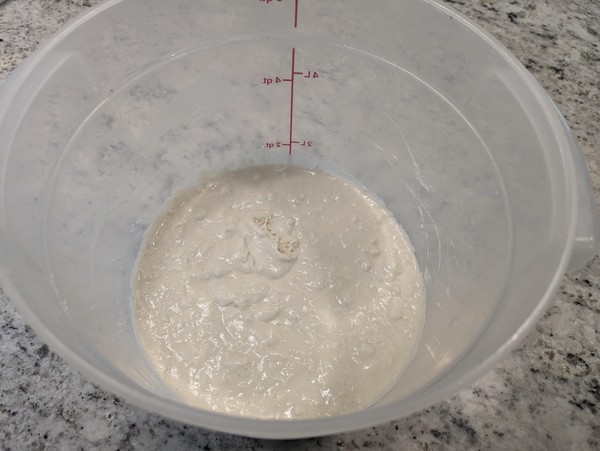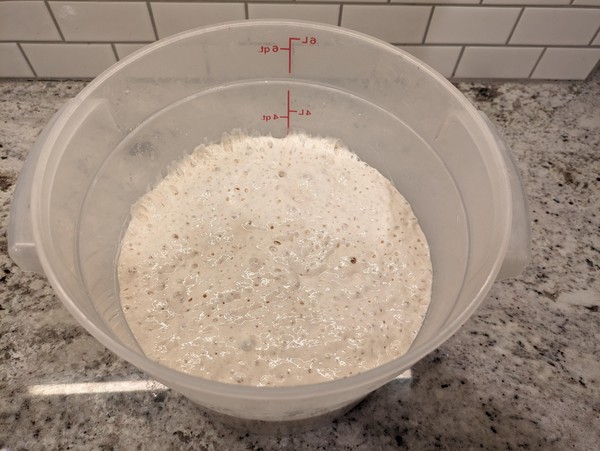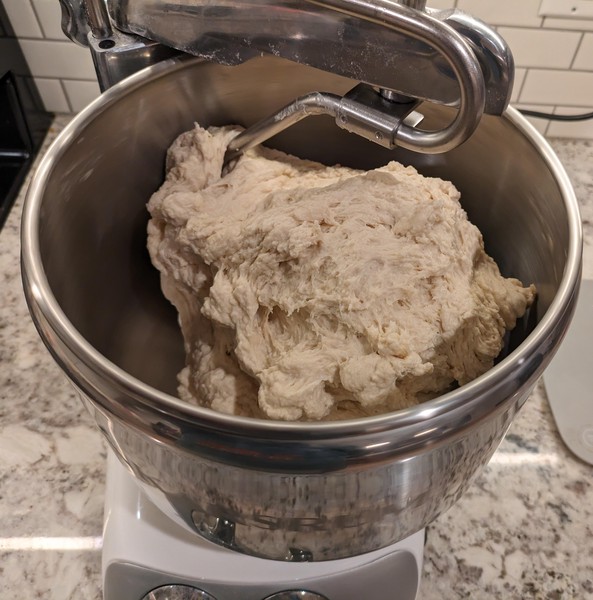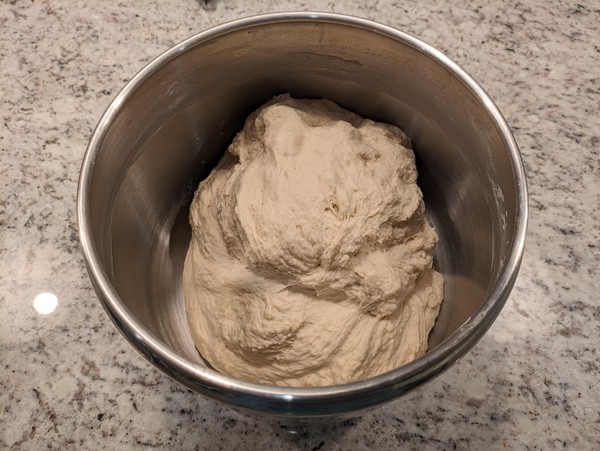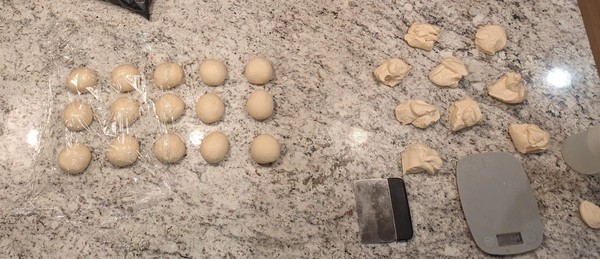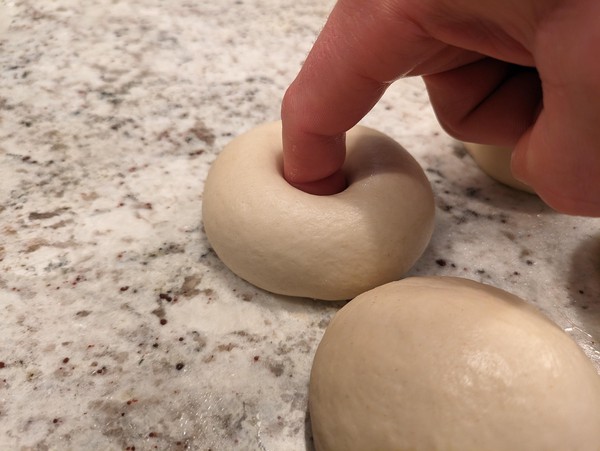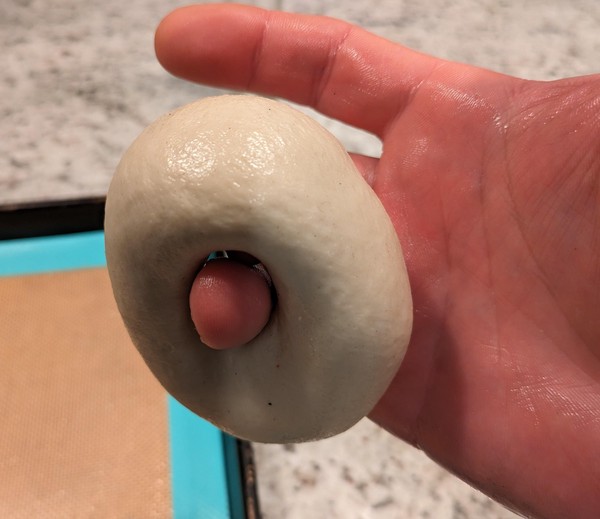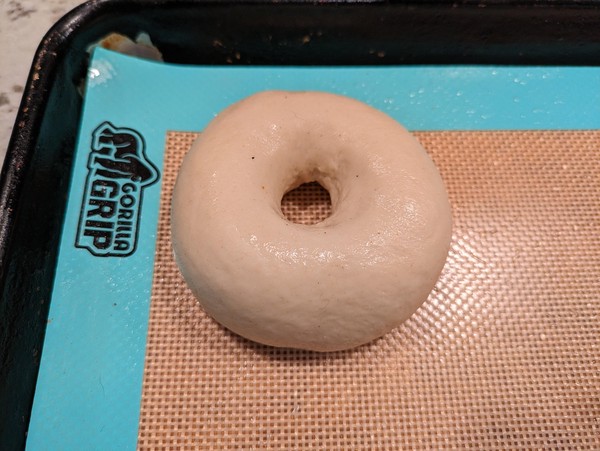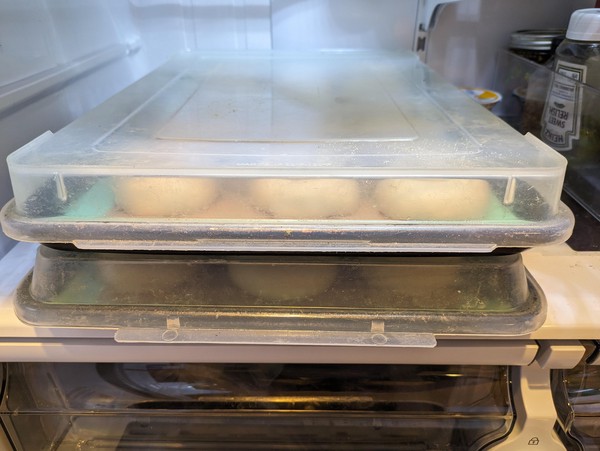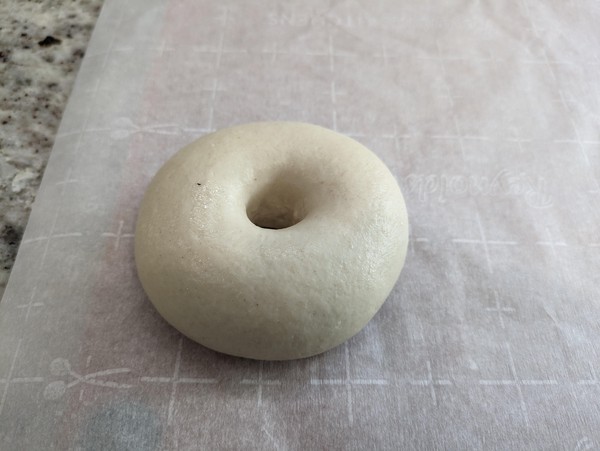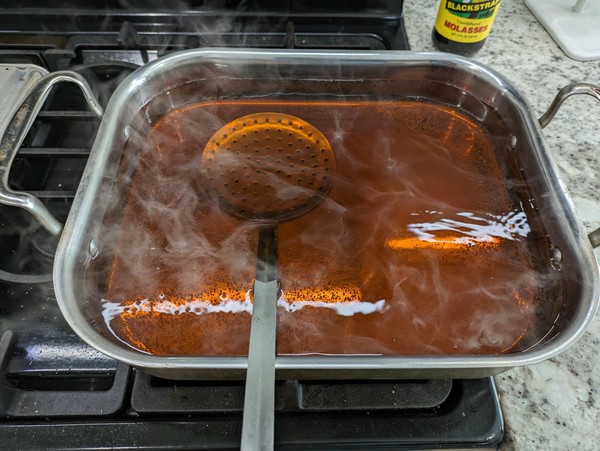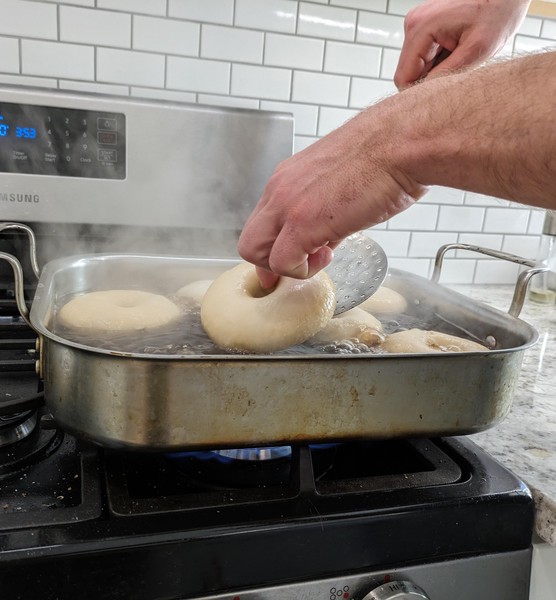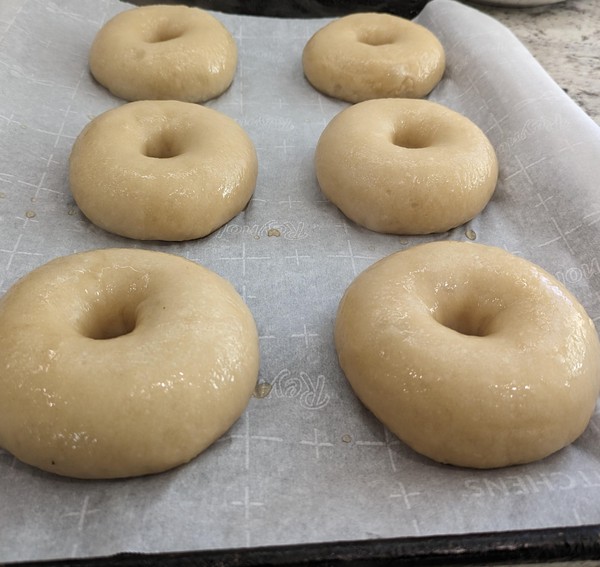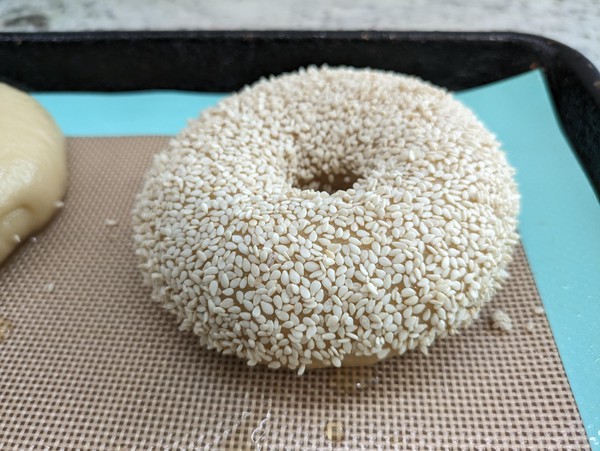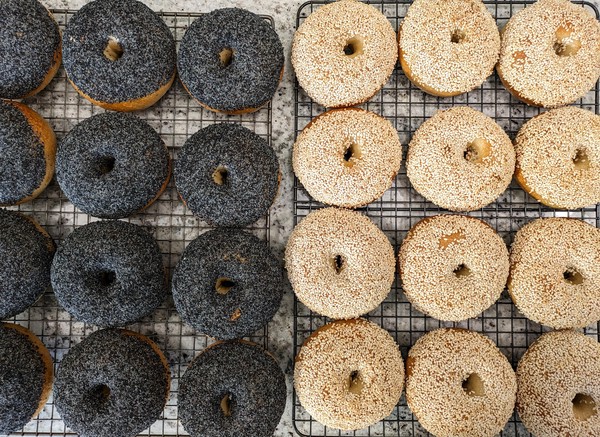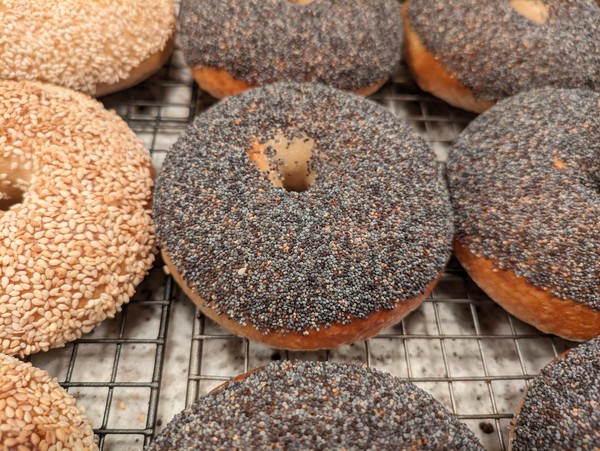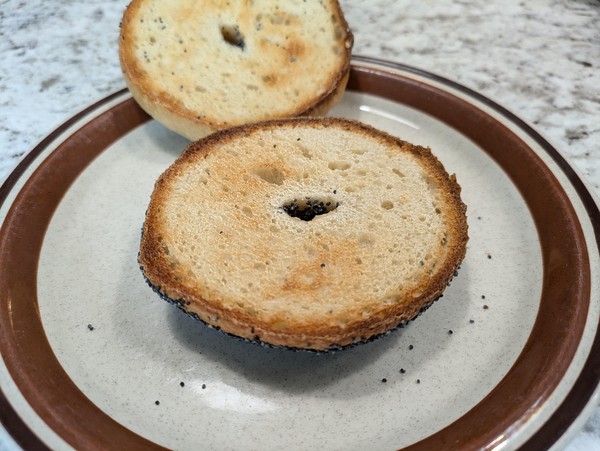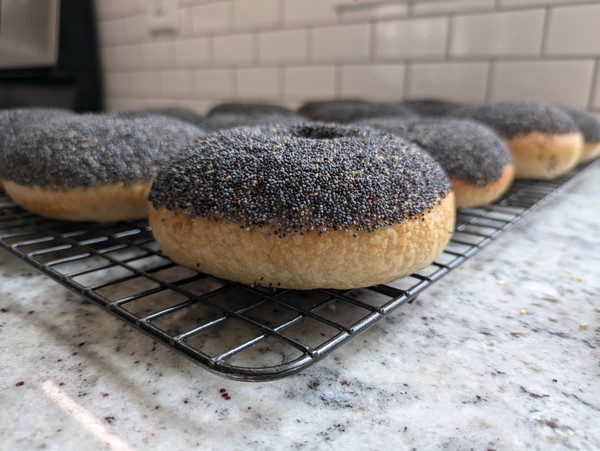This 2-day project has you making the dough on Day 1 and boiling + baking on Day 2. These bagels have a lovely flavor and a crisp, golden crust. It takes some practice but, when you get it down, you will hold your own against the best bagel shops in town.
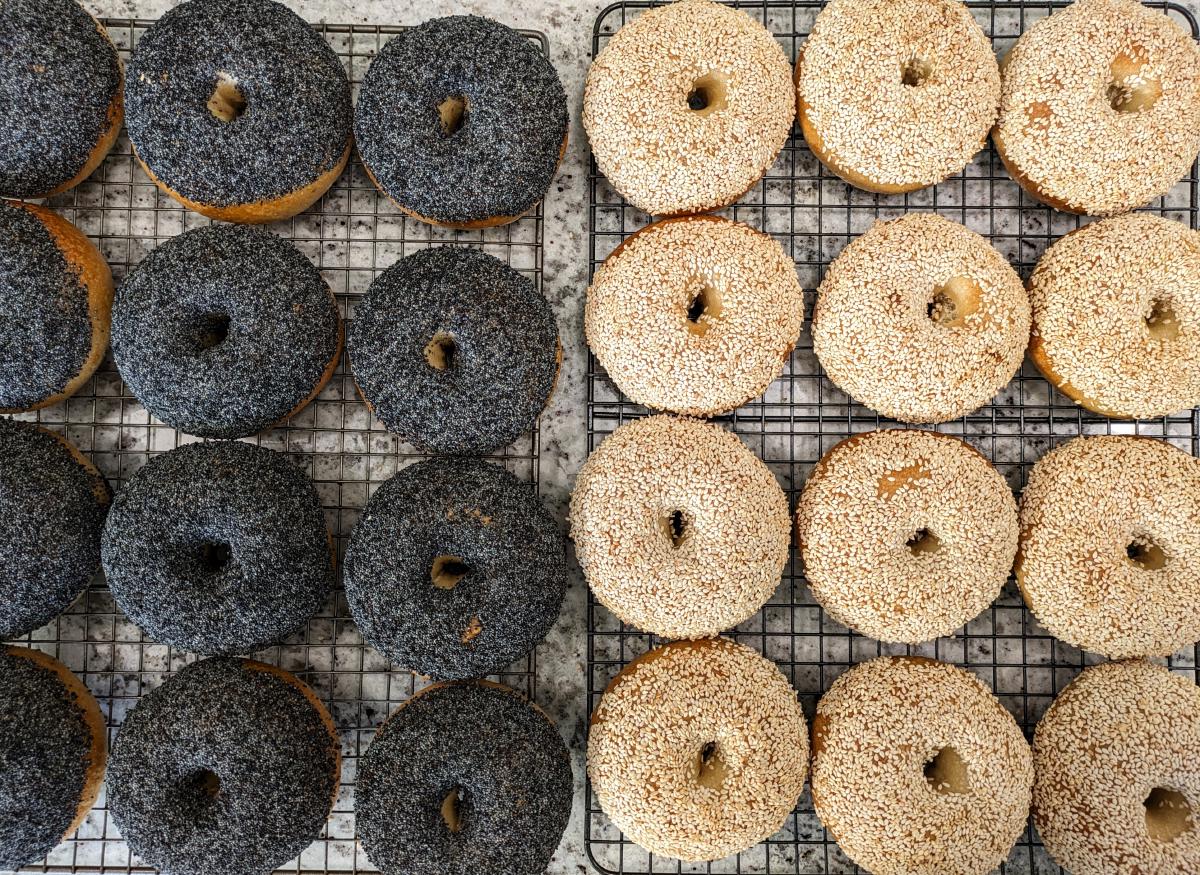
Ingredients
Sponge
- 620 g high-gluten flour1
- 733 g water
- 1 tsp instant yeast
Dough
- 1363 g high-gluten flour1
- 400 g water
- 34 g salt
- 61 g non-diastatic malt powder
Boil
- 1-2 tbsp barley malt syrup or molasses
Sponge (Day 1, Morning)
- In bucket, dissolve yeast in water
- Stir in flour with spatula until well-mixed
- Cover and leave at room temp
Dough (Day 1, Evening)
- In mixer bowl, mix sponge and water with spatula
- Add salt and mix with spatula
- Add all of flour, do not mix
- Level flour and make a small well in the middle
- Add malt and mix with spatula until roughly combined
- Mix on low for ~10 minutes
- Stop and cover mixer with large plastic bag, rest for ~10 minutes
- Mix on low for ~10 more minutes
- Check for windowpane
- Repeat the mix and rest cycle until dough passes the windowpane test
- Cover and rest for ~10 minutes
Ball Up (Day 1, Evening)
- Dump dough onto oiled counter
- Divide into 132g pieces
- Ball up each piece
- Slap it around hand-to-hand, like tossing a baseball into a glove
- Use both hands to form into ball by folding bottom into middle while twisting
- Put on bench and use both palms to rotate while pulling inwards, building a tighter ball
- Cover with plastic wrap for 15-30 minutes5
Shape (Day 1, Evening)
- Gently use palms to fix shape, if needed
- Poke index finger through middle, all the way to the bench
- Use other hand to pry it off the bench and gently, and evenly, stretch the hole to 1-2 inches
- Place onto sheet pan and repeat
- Float test - Fill small bowl with water and gently add a bagel. If it sinks, wait 15-30 minutes5 and try again.
- Cover sheet pan and put in fridge
Boil and Bake (Day 2, Whenever)
Tools - something wide with tall sides to boil water in, cover for pot, small strainer / slotted spoon for fishing out bagels
- Heat oven to 500°F and pot to boil on stove
- Take bagels out of fridge
- If doing seeds, put at least 1/2 cup onto a plate-bowl
- Gently pick up each bagel and fix shape. They flatten and spread out a bit, so perk them back up
- If you have 12 bagels on the sheet pan
- move 6 to oiled parchment on a large cutting board
- cover with plastic wrap and put in fridge
- When water is nearing a boil, add molasses and stir so it doesn’t stick and burn
- The water should turn a copper / light root beer color
- When water is boiling, gently drop in 6 bagels. They should float like bumper boats
- Cover and set a timer for 1 minute
- Use strainer and your fingers to gently flip each bagel, staying close to the water so it doesn’t splash
- Cover and set a timer for 1 minute
- Use strainer to move each bagel to the sheet pan, flipping right side up
- If doing seeds
- gently pick up bagel and lay upside down into seeds
- jostle plate around in a circlular motion to get good seed coverage, without any downward pressure
- gently pick up bagel and put right side up on sheet pan
- Bake for 8 minutes, then quickly rotate sheet pan, and bake until golden or to taste (~5 more minutes)
- Repeat for next batch of 67
Notes
- High-gluten flour => Bread flour plus vital wheat gluten is a good substitute. Adjust recipe to use 1313 g flour + 50g vital wheat gluten.
- Tough dough => This is a tough, low-hydration dough with a long mix time. It is hard on mixers; they will overheat and can break
- Scaling down for KitchenAid mixer => If you have a KitchenAid, multiple each ingredient by 0.375, and make 12 ~100g bagels. Go easy on it
- Ankarsrum is GOAT => If you’re the right kind of crazy, get a Ankarsrum Assistent and crank out 24 ~132g bagels with ease
- Hot Weather => In summer, use shorter turnaround times for the steps, since the dough can overproof on hot days. Less yeast and ice water help slow things down too
- Shaping => It’s easier to fix the shape on Day 2 when the dough is cold
- Efficiency => You can save time by boiling the 2nd batch while the first bakes. With two sheet pans in the oven, you may have to rotate and swap the pans, since the lower pan will get hotter on the bottom. Don’t take too much heat out of the oven

